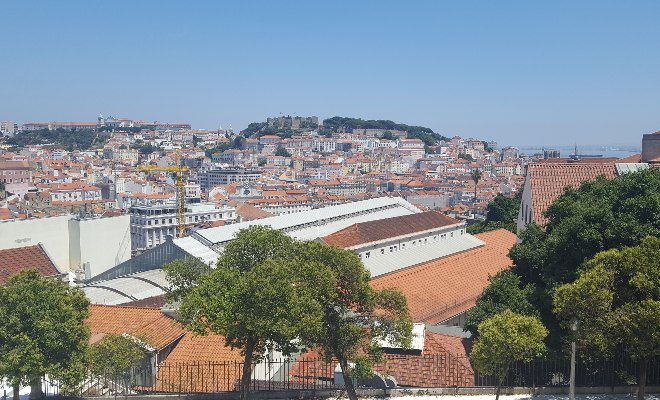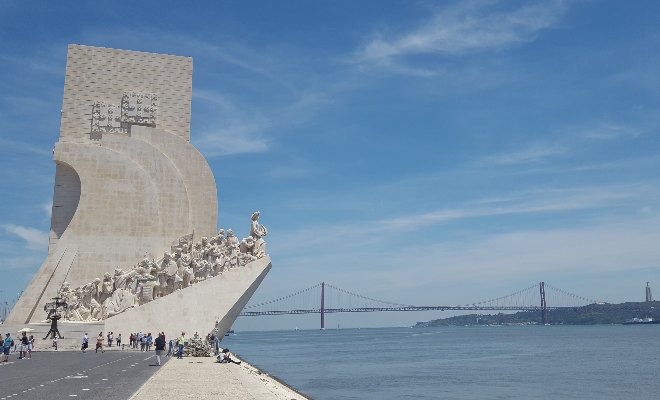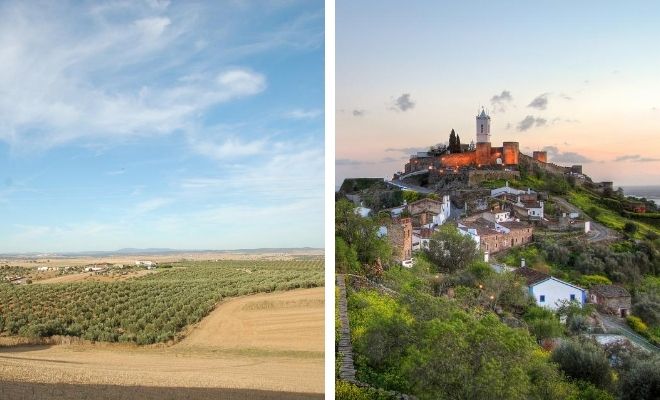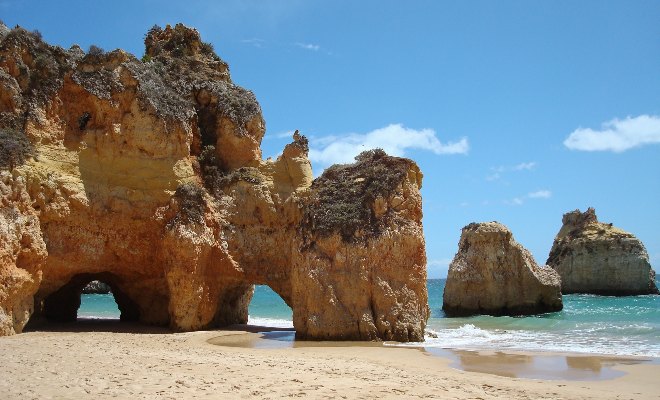Official UK partner to the Paradors, Pousadas, Pestana Hotels & Resorts, Les Collectionneurs (Chateaux), and European Hotels Collection. Keytours International, formerly Keytel International, your agent in the UK.
Lisbon, a cultural getaway to Portugal’s warmest region
The Portuguese do benefit from a milder winter and early spring. Lunch is often still enjoyed on a terrace, and even on a colder day the coffee still tastes good outside whilst you take in the sight of Baroque churches and palaces, cobbled squares, and tiled facades. The days are milder, although the evenings still have a chill in the air, and unless you are unlucky with the weather, you can often get more pleasure from visiting cities like Lisbon in the off-season without the crowds. The roads are quieter, you probably won’t need to make use of your wonderfully-honed British queueing skills, and you can take your time. The one thing you may shy away from will be swimming in the sea in January, or are you brave enough?. You can always find a hotel with an outdoor pool open early in the season.
Oh, and you will make considerable savings on your costs – air travel, car hire, and hotels are all much better value away from the peak summer months. So you can upgrade in style for less, or just bank the savings.
Lisbon
We thoroughly recommend a stay in Lisbon, capital of Portugal and full of character and colour. Lisbon is an exciting mix of the old and the new – wonderfully colourful terraces of historic buildings framing famous squares, and contemporary construction reflecting the regeneration of parts of the city. All set in a bowl with the castle of St George standing prominently on one side and the Tagus estuary extending across the front from the imposing 25th April bridge, which leads your gaze to the monument of Cristo Rei (Christ the King) on the other bank, standing 110m tall.

You will want to spend a few days here, there is no point rushing, particularly when you get into the Portuguese pace of life. Portugal’s cities are particularly notable for their tiles and colourful architecture – terracotta, yellow, pink, red and blue shades blend remarkably well into the panorama and Lisbon is no exception. Everyone ends up in the Praca do Comercio, with its yellow frame of arched galleries and the proud statue of King Jose I on horseback as its centrepiece. But Lisbon is a city with so many aspects to take in, that everyone seems to get there from different directions. The Alfama district is perhaps the most famous since it retains a lot of the original narrow streets and buildings that were mercifully spared the destruction widely wreaked by the tragic earthquake of 1755. Some of the oldest trams still run here, nearly scraping the walls of the houses and shops as they pass, and some of the best Fado (Portuguese folk music) can be experienced here by night. Lisbon spent over 400 years under Moorish rule and its influence in design and cuisine are still markedly apparent, as are its seafaring roots which are celebrated in the names of many monuments. Vasco de Gama set off from here to discover the route by sea to India and many Portuguese caravels brought riches, spices and cloths from Brazil, Africa’s north and west coasts, and the East to its docks which have recently been rejuvenated and developed with restaurants and bars. The Marques de Pombal was the prime minister who oversaw the rebuilding of the city ravaged by the earthquake of 1755 and the square named after him is considered perhaps the most central point of the city. The centre is home to a wealth of museums, historic sites, shopping areas and plenty of terraces offering you respite and a coffee. For those who appreciate a good view but not too strenous a hike, it also has 3 funicular railways taking the effort out of exploring.

Lisbon is a gateway to so much more though – set on the north side of the Tagus estuary and a short drive from Atlantic beaches with surfers and the occasional palm tree, you are with easy reach of Cascais – a charming seaside resort popular with the nobility of Europe during WWII alongside Estoril with its famous casino – and “colourful” Sintra inland – with its memorable Pena Palace, National Palace, castle and the Quinta da Regaleira to visit.
To the south, cross the impressive 25th April bridge spanning the Tagus to the Setubal peninsula, or to the east enjoying crossing one of the longest bridges in Europe – the Vasco de Gama bridge (17 km long) – towards Evora and Alcacer do Sal.
The Alentejo
You are now in the Alentejo, a quiet region of beautiful plains, quieter coastline with national parks and cork trees and several provincial cities and towns to visit. Evora, with the Roman ruins of the temple of Diana, Beja with its 13th century castle and Alcacer do Sal with its medieval castle and the river Sado running through it. Unsurprisingly, there are fine, historic Pousadas in each of these towns, each a fine place to stay and to enjoy some calm, stylish Portuguese hospitality. This is also an up-and-coming region for wineries, where white wines are starting to gain international recognition and wineries are starting to open up to tourists visiting. To the east of the Alentejo are extensive lakes and rivers, and castles aplenty such as the attractive fortifications of Monsaraz, to the southeast – the Atlantic coast – are great surf beaches and even further south – on the northwest end of the Algarve region – the Atlantic beaches are much quieter and less visited than the southerly beaches which have given the Algarve its popular tourist appeal.

In between, you can enjoy the rolling landscape of plains, hills, reservoirs and lakes, and the subtle architecture of a region less visited, almost timeless, and more attractive as a result. Immense orchards of cork trees, vineyards, olive groves, old churches and the occasional medieval castle sitting prominently on a hill hold your gaze and reassure you that not all things change quickly.
The Algarve
And as you approach the Algarve, you are suddenly brought back into the 21st century with the extensive road systems and construction along the coastline and a small distance inland. Inland, you have some lovely towns like Mertola, with its medieval Mosque, Almodovar and its castle, and Silves with its riverfront and yet another imposing castle above!

Ignore the main resorts and enjoy the quieter beaches to the west and east, as well as the islands off the coast around Faro, with the nature reserve. Bookending the Algarve are Sagres, near Europe’s southwestern Cape (Saint Vincent), where you can find the tranquil Pousada on the clifftop near the town and overlooking a great beach, and to the east the really delightful town of Tavira on the Gilao river just above the estuary and extensive saltmarshes.Tavira is a lovely place to visit all year round with a busy riverside square and small shopping streets, and set above, the mustard-coloured walls of the convent which houses the Pousada de Tavira. Enjoy a rivertaxi ride from the wharf near the town centre down the river to the “Island of Tavira” just offshore: 11 km of great sandy beaches and several relaxed restaurants where you can enjoy a long, lazy lunch in the sun or shade. And to the east, some of Portugal’s best, yet lesser visited beaches, with warmer water for swimming and some excellently-priced restaurants.
There is more to the Algarve than you imagine, and a great deal of natural beauty to enjoy once you leave the resorts behind.
